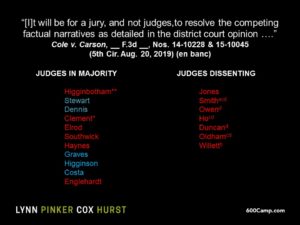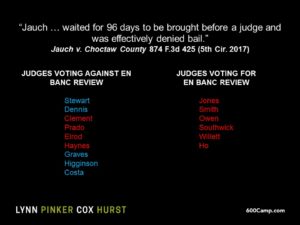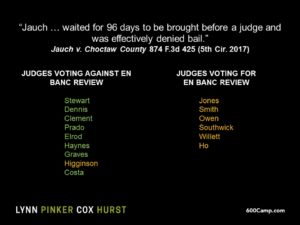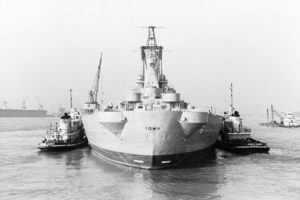 Continuing a line of thought from earlier 2019 authority about standing to challenge administrative-agency action, the Fifth Circuit found an organization’s alleged standing was too attenuated when it “contend[ed] that its injuries are traceable to Treasury’s actions because Treasury has plenary authority over the [Low-Income Housing Tax Credit] program, including the power both to issue regulations and to recapture LIHTCs from investors who violate the [Fair Housing Act].” Inclusive Communities Project, Inc. v. Dep’t of the Treasury also shows that the style trend toward use of contractions hasn’t lessened as 2019’s continued. No. 19-10377 (Dec. 30, 2019).
Continuing a line of thought from earlier 2019 authority about standing to challenge administrative-agency action, the Fifth Circuit found an organization’s alleged standing was too attenuated when it “contend[ed] that its injuries are traceable to Treasury’s actions because Treasury has plenary authority over the [Low-Income Housing Tax Credit] program, including the power both to issue regulations and to recapture LIHTCs from investors who violate the [Fair Housing Act].” Inclusive Communities Project, Inc. v. Dep’t of the Treasury also shows that the style trend toward use of contractions hasn’t lessened as 2019’s continued. No. 19-10377 (Dec. 30, 2019).
Category Archives: General Court Information
 Several amendments to the Federal Rules of Appellate Procedure became effective on December 1, 2019. This House Report describes and explains them.
Several amendments to the Federal Rules of Appellate Procedure became effective on December 1, 2019. This House Report describes and explains them.
 Three provocative cases are set for en banc consideration by the full Fifth Circuit (with some minor variations due to recusals and senior-judge participation) on January 22-23, 2020:
Three provocative cases are set for en banc consideration by the full Fifth Circuit (with some minor variations due to recusals and senior-judge participation) on January 22-23, 2020:
- Thomas v. Bryant, No. 19-60133, a Voting Rights Act case about a state senate district in the Mississippi Delta;
- Brackeen v. Bernhardt, No. 18-11479, which presents an important Indian law issue interwoven with fundamental administrative law concepts; and
- Williams v. Taylor Seidenbach, Inc., No. 18-31159, an effort to resolve the “finality trap” about appeals from from trial-court rulings made without prejudice.
 The GSA’s page about the John Minor Wisdom Courthouse offers a free poster for download of the building’s striking “Great Hall.”
The GSA’s page about the John Minor Wisdom Courthouse offers a free poster for download of the building’s striking “Great Hall.”
 In the 1200s, Henry III was protected from suit by sovereign immunity, as chronicled by the prolific Bracton;
In the 1200s, Henry III was protected from suit by sovereign immunity, as chronicled by the prolific Bracton;- In the 1780s, “Brutus,” the Anti-Federalist, debated with Alexander Hamilton about whether the Constitution would undermine sovereign immunity by allowing debilitating federal-court lawsuits against states about Revolutionary War debts;
- The Eleventh Amendment was ratified in 1796 to address those concerns and prevent, inter alia, federal-court suits “prosecuted against one of the United States by Citizens of another State . . . .” (emphasis added);
- Some time later, Kathie Cutrer sued the Tarrant County Local Workforce Development Board, in federal court under federal law, for discriminating against her because of severe back problems;
- The Fifth Circuit reversed the dismissal of her claim on sovereign-immunity grounds, observing, inter alia: “Because Tarrant County, the City of Arlington, and the City of Fort Worth are not the State of Texas, they obviously cannot confer the State’s sovereign immunity upon a board by interlocal agreement. They can’t give what they don’t have.” (emphasis added). Cutrer v. Tarrant County Local Workforce Development Board, No. 18-11092 (Nov. 22, 2019) (Oldham J., joined in the judgment only by Graves and Wiener, JJ.) (Footnote 1 of the opinion also explains why Texas refers to a county adminstrator as a “county judge,” tracing the answer to the position of “alcalde” in Spanish law.)
 “Appellants argue that, by finding disgorgement a ‘penalty’ under [28] § 2462, Kokesh necessarily also decided that disgorgement is not an equitable remedy courts may impose in SEC enforcement proceedings. We disagree. Kokesh itself expressly declined to address that question, and so our precedent upholding district court authority to order disgorgement controls.” SEC v. Team Resources Inc., No. 18-10931 (Nov. 5, 2019).
“Appellants argue that, by finding disgorgement a ‘penalty’ under [28] § 2462, Kokesh necessarily also decided that disgorgement is not an equitable remedy courts may impose in SEC enforcement proceedings. We disagree. Kokesh itself expressly declined to address that question, and so our precedent upholding district court authority to order disgorgement controls.” SEC v. Team Resources Inc., No. 18-10931 (Nov. 5, 2019).
An excellent recent article in Law360 summarizes the state of the sometimes-Byzantine structure of Texas’s intermediate appellate courts. The article is behind Law360’s paywall but my remarks are below:
 Are unpublished opinions introducing murkiness into a legal issue? Rein them in with Garcia v. Professional Contract Servcs., Inc., No. 18-50144, (Sept. 11, 2019), which:
Are unpublished opinions introducing murkiness into a legal issue? Rein them in with Garcia v. Professional Contract Servcs., Inc., No. 18-50144, (Sept. 11, 2019), which:
- Limited their holdings: “The company points to a couple of unpublished decisions of our court that have flagged the circuit split over this issue. These decisions do not reference
 the binding Fifth Circuit precedent on this point because they did not need to: both decisions resolved the cases before them on other grounds.” (citations omitted); and
the binding Fifth Circuit precedent on this point because they did not need to: both decisions resolved the cases before them on other grounds.” (citations omitted); and - Dismissed their precedential value: “To the extent some unpublished cases have introduced murkiness into the case law in this area, that confusion should be resolved by applying our binding precedent.”
 On October 1, the term of Hon. Priscilla Owen begins as Chief Judge of the Fifth Circuit. The Court’s official press release provides background information. Every best wish to Chief Judge Owen in this important position.
On October 1, the term of Hon. Priscilla Owen begins as Chief Judge of the Fifth Circuit. The Court’s official press release provides background information. Every best wish to Chief Judge Owen in this important position.

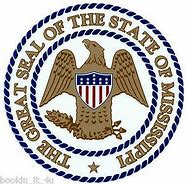 The Fifth Circuit (minus the two Mississippi judges, who are) voted to take en banc the difficult voting rights case of Thomas v. Bryant, No. 19-60133 (as revised, Sept. 3, 2019), which also presents important issues about justiciability and appellate procedure. At the panel level, all three judges wrote opinions.
The Fifth Circuit (minus the two Mississippi judges, who are) voted to take en banc the difficult voting rights case of Thomas v. Bryant, No. 19-60133 (as revised, Sept. 3, 2019), which also presents important issues about justiciability and appellate procedure. At the panel level, all three judges wrote opinions.
 The full Fifth Circuit engaged the boundaries of the administrative state in Collins v. Mnuchin. A 9-7 majority of the en banc Court found that the FHFA (the regulator of Fannie Mae and Freddie Mac) was structured unconstitutionally; a different 9-7 majority found that the appropriate remedy was a go-forward restructure of the agency rather than the unwinding of a significant, previously-ordered financial transaction. (If the below is hard to read in your browser, just click on it to see it full-sized).
The full Fifth Circuit engaged the boundaries of the administrative state in Collins v. Mnuchin. A 9-7 majority of the en banc Court found that the FHFA (the regulator of Fannie Mae and Freddie Mac) was structured unconstitutionally; a different 9-7 majority found that the appropriate remedy was a go-forward restructure of the agency rather than the unwinding of a significant, previously-ordered financial transaction. (If the below is hard to read in your browser, just click on it to see it full-sized).
 Four Republican appointees joined the majority on remedy, two of whom–Judges Owen and Duncan–had joined the majority on constitutionality.
Four Republican appointees joined the majority on remedy, two of whom–Judges Owen and Duncan–had joined the majority on constitutionality.
Among the various concurrences and dissents, Judges Ho and Oldham concurred to emphasize the significance of the case to other administrative agencies, while Judges Costa and Higginson dissented on the basis of the plaintiffs’ standing.
The diverse approaches of the Republican-appointed judges underscore the frequent observation on this blog that the term “conservative” is a broad umbrella for different perspectives on distinct aspects of the apparatus of government.
Assuming the confirmation of Hon. Sul Ozerden of Mississippi, all active-judge positions on the Fifth Circuit will soon be filled. Of the 17 judges, 12 will have been appointed by Republican Presidents (6 by President Trump), and 5 by Democrats. 8 of the 17 judges will have previously served, for some amount of time, as a state or federal trial judge.
En banc votes by the Court, examined with an eye on the political party of the appointing Presidents, can show patterns. For example, in this week’s Cole v. Carson case, the Democrat-appointed judges voted the same way while the Republican-appointed judges divided. (If these slides are hard to read on your browser, clicking on them should bring them to full size and clear resolution):
All former trial judges voted the same way:
Similarly, in the 2017 case of Jauch v. Choctaw County about pretrial detention, all the Court’s Democrat-appointed judges voted against en banc review, while the Republican-appointed ones divided:
And again, all of the Court’s former trial judges voted the same way:
There are many ways to define, characterize, and otherwise describe judges and their philosophies. This quick review suggests that an exclusive focus on political-party association is too narrow.
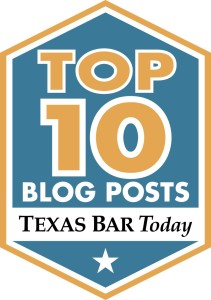 The Fifth Circuit’s published opinions this week include Municipal Employees’ Retirement System v. Pier One Imports, a large securities case involving the beleaguered stock of the “Pier One” retail chain; the second, Cole v. Carson, is a long-running, hard-fought lawsuit about a police shooting. (The fracturing of the en banc court in Cole will be the subject of an upcoming post.) Despite the gravity of these issues, the Court crafted two wonderful turns of phrase, deserving of a moment’s recognition because they are both fun and effective.
The Fifth Circuit’s published opinions this week include Municipal Employees’ Retirement System v. Pier One Imports, a large securities case involving the beleaguered stock of the “Pier One” retail chain; the second, Cole v. Carson, is a long-running, hard-fought lawsuit about a police shooting. (The fracturing of the en banc court in Cole will be the subject of an upcoming post.) Despite the gravity of these issues, the Court crafted two wonderful turns of phrase, deserving of a moment’s recognition because they are both fun and effective.
- The business question giving rise to Pier One was whether management had made wise decisions about what products to emphasize; thus, Judge Elrod began the opinion with some wise words from Coco Chanel:
- The dissents in Cole clashed with one another as well as the majority, leading to a “fiery” retort by Judge Willett:
 In a remarkable letter last month, some months after an en banc argument, the federal agency at issue in the high-profile case of Collins v. Mnuchin has decided that it is in fact constitutional. The plaintiffs responded that this position shift proved their point.
In a remarkable letter last month, some months after an en banc argument, the federal agency at issue in the high-profile case of Collins v. Mnuchin has decided that it is in fact constitutional. The plaintiffs responded that this position shift proved their point.
The Fifth Circuit denied en banc review of Inclusive Communities v. Lincoln Property Co., 920 F.3d 890 (5th Cir. 2019), which affirmed (over a dissent) the Rule 12 dismissal of Fair Housing Act claims against Dallas-area apartment businesses that declined to participate in the Section 8 program. The votes were as follows:
 After a recent en banc vote, the full Fifth Circuit will engage an important limit on the power of the administrative state. The majority and dissenting opinons in Sierra Club v. Luminant Energy grappled with the “concurrent-remedies doctrine” and whether it created a limitations bar to an action for equitable relief under the Clean Air Act. No. No. 17-10235 (order issued June 10, 2019).
After a recent en banc vote, the full Fifth Circuit will engage an important limit on the power of the administrative state. The majority and dissenting opinons in Sierra Club v. Luminant Energy grappled with the “concurrent-remedies doctrine” and whether it created a limitations bar to an action for equitable relief under the Clean Air Act. No. No. 17-10235 (order issued June 10, 2019).
 Lake Eugenie Land & Devel. v. BP, the latest in the “body of federal common law in this Circuit” about the Deepwater Horizon settlement, presents both a crisp summary of the mandate rule and a dramatic tale of piracy on the high seas.
Lake Eugenie Land & Devel. v. BP, the latest in the “body of federal common law in this Circuit” about the Deepwater Horizon settlement, presents both a crisp summary of the mandate rule and a dramatic tale of piracy on the high seas.
Mandate rule. As to the mandate rule, the opinion succinctly summarizes its theoretical basis –
“The mandate rule is a subspecies of the law-of-the-case doctrine: When a court decides a question, it usually decides it once and for all ‘subsequent stages in the same case.’ This doctrine operates on a horizonal plane—constricting a later panel vis-à-vis an earlier panel of the same court. It also operates on a vertical plane—constricting a lower court vis-à-vis a higher court. The vertical variant is what we call the ‘mandate rule,’ and it’s the kind at issue here.”
(citations omitted), as well as the way to implement it: “The first step is figuring out what our mandate said. . . . The next question is whether the district court deviated from that mandate.” (citations omitted).
Piracy on the high seas. The opinion cites some 19th-Century authority about the foundations of the mandate rule; among them, Himley v. Rose, 9 U.S. (5 Cranch) 313 (1809), which involved a “decree . . . formerly rendered” about the restoration of cargo from the merchant ship Sarah. The earlier opinion, Rose v. Himley, 8 U.S. (4 Cranch) 241 (1808), presents an  amazing tale of a load of coffee, sent from the port of Santo Domingo by “brigands” during a slave revolt against the French government, which was then intercepted and seized by a French privateer and sold in Cuba.
amazing tale of a load of coffee, sent from the port of Santo Domingo by “brigands” during a slave revolt against the French government, which was then intercepted and seized by a French privateer and sold in Cuba.
 Here is my PowerPoint from the recent appellate course sponsored by University of Texas CLE. I also discussed this month’s opinion in In re: City of Houston, granting mandamus relief in a privilege dispute.
Here is my PowerPoint from the recent appellate course sponsored by University of Texas CLE. I also discussed this month’s opinion in In re: City of Houston, granting mandamus relief in a privilege dispute.
The Northern District of Texas sent this message today: “The Earle Cabell Federal Building and U.S. Courthouse located at 1100 Commerce Street, Dallas, TX, will be closed to the public tomorrow [June 18]. Initial criminal proceedings that are scheduled tomorrow before a magistrate judge will be held at the Fort Worth division located at 501 W. 10th Street, Fort Worth, TX. Other proceedings scheduled for tomorrow in Dallas will be rescheduled unless you have been specifically informed of alternative arrangements by a courtroom deputy or other court personnel. Updates to this information will be provided on our website at www.txnd.uscourts.gov.”
 Here is a copy of my PowerPoint from today’s presentation about business cases in the Dallas Court of Appeals during 2019. Thanks to all who came out, and to the DBA Appellate Section for the invitation!
Here is a copy of my PowerPoint from today’s presentation about business cases in the Dallas Court of Appeals during 2019. Thanks to all who came out, and to the DBA Appellate Section for the invitation!
 With yesterday’s nomination of Hon. Sul Ozerden (right), who presently serves as a District Judge for the Southern District of Mississippi, the Fifth Circuit is on the cusp of having a full roster of active judges.
With yesterday’s nomination of Hon. Sul Ozerden (right), who presently serves as a District Judge for the Southern District of Mississippi, the Fifth Circuit is on the cusp of having a full roster of active judges.
 Today’s post on 600Commerce hearkens back to a case covered by this blog several years ago when, literally, the ship had sailed. (The 600Commerce post goes on to note that a similar principle applies in a dispute about the right of possession (in Texas practice, a forcible detainer action), which becomes moot when “a writ of possession had been served on appellant” and thus “appellant is no longer in possession of [the] premises.” Jones v. Willems, No. 05-18-01191-CV (June 7, 2019). Longtime 600Camp readers will be interested to know that the ship in question, since reflagged as the M/V CALHOUN, is in Singapore as of the date of this post, still well away from Fifth Circuit jurisdiction.
Today’s post on 600Commerce hearkens back to a case covered by this blog several years ago when, literally, the ship had sailed. (The 600Commerce post goes on to note that a similar principle applies in a dispute about the right of possession (in Texas practice, a forcible detainer action), which becomes moot when “a writ of possession had been served on appellant” and thus “appellant is no longer in possession of [the] premises.” Jones v. Willems, No. 05-18-01191-CV (June 7, 2019). Longtime 600Camp readers will be interested to know that the ship in question, since reflagged as the M/V CALHOUN, is in Singapore as of the date of this post, still well away from Fifth Circuit jurisdiction.
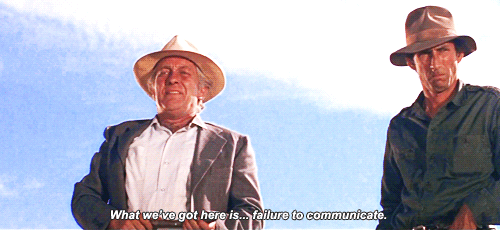 Valderas, the plaintiff in an excessive-force case, opposed the defendant’s motion to strike with a single argument – that the defendant had failed to satisfy the conference requirement of N.D. Tex. Local Rule 7.1. The district court disagreed, as did the Fifth Circuit: “Valderas cites to only one decision explicating the meaning of the local rule in question and implies that the decision establishes that a telephone conversation is necessary to satisfy the conference requirement. The decision explicitly notes, however, that the conference requirement can be met through a written conferral.” Valderas v. City of Lubbock , No. 18-11023 (May 21, 2019) (unpublished) (emphasis added) (applying Dondi Props. Corp. v. Commerce Sav. & Loan Ass’n, 121 F.R.D. 284, 290 (N.D. Tex. 1988) (en banc) (per curiam)).
Valderas, the plaintiff in an excessive-force case, opposed the defendant’s motion to strike with a single argument – that the defendant had failed to satisfy the conference requirement of N.D. Tex. Local Rule 7.1. The district court disagreed, as did the Fifth Circuit: “Valderas cites to only one decision explicating the meaning of the local rule in question and implies that the decision establishes that a telephone conversation is necessary to satisfy the conference requirement. The decision explicitly notes, however, that the conference requirement can be met through a written conferral.” Valderas v. City of Lubbock , No. 18-11023 (May 21, 2019) (unpublished) (emphasis added) (applying Dondi Props. Corp. v. Commerce Sav. & Loan Ass’n, 121 F.R.D. 284, 290 (N.D. Tex. 1988) (en banc) (per curiam)).
 In the category of “not very surprising en banc votes”: After a plea for en banc review in a recent case about federal jurisdiction over injury claims arising from asbestos exposure at the Avondale Shipyard (in its heyday, the largest employer in Louisiana), the Fifth Circuit has accepted that case for en banc review. Latiolas v. Huntington-Ingalls, No. 18-30652 (May 8, 2019). (To the right, the launch at Avondale of a Knox-class frigate, an unheralded but stalwart antisubmarine-warfare vessel of the late Cold War.)
In the category of “not very surprising en banc votes”: After a plea for en banc review in a recent case about federal jurisdiction over injury claims arising from asbestos exposure at the Avondale Shipyard (in its heyday, the largest employer in Louisiana), the Fifth Circuit has accepted that case for en banc review. Latiolas v. Huntington-Ingalls, No. 18-30652 (May 8, 2019). (To the right, the launch at Avondale of a Knox-class frigate, an unheralded but stalwart antisubmarine-warfare vessel of the late Cold War.)
Celebrate the Cinco de Mayo with 5 key Dallas court of appeals cases from 2019!
 The Tampa Bay Buccaneers football team sought recovery in BP’s Deepwater Horizon claims-processing system. It appealed to the Fifth Circuit, and requested that the courtroom be sealed for the oral argument. In a single-judge order, Judge Costa reviewed the general requirements about sealing, noted that it was the court’s decision and not the litigants’, and rejected the request: “As its right, Claimant ID 100246928 has used the federal courts in its attempt to obtain millions of dollars it believes BP owes because of the oil spill. But it should not able to benefit from this public resource while treating it like a private tribunal when there is no good reason to do so. On Monday, the public will be able to access the courtroom it pays for.” BP Exploration & Production v. Claimant ID 100246928, No. 18-30375 (March 29, 2019).
The Tampa Bay Buccaneers football team sought recovery in BP’s Deepwater Horizon claims-processing system. It appealed to the Fifth Circuit, and requested that the courtroom be sealed for the oral argument. In a single-judge order, Judge Costa reviewed the general requirements about sealing, noted that it was the court’s decision and not the litigants’, and rejected the request: “As its right, Claimant ID 100246928 has used the federal courts in its attempt to obtain millions of dollars it believes BP owes because of the oil spill. But it should not able to benefit from this public resource while treating it like a private tribunal when there is no good reason to do so. On Monday, the public will be able to access the courtroom it pays for.” BP Exploration & Production v. Claimant ID 100246928, No. 18-30375 (March 29, 2019).
This month’s “Headnotes” from the Dallas Bar Association has two items of particular interest — on page 18, information about each of the new “Slate of Eight” Justices on the Dallas Fifth District Court of Appeals; and on page 19, an article by me and my LPCH colleague John Volney about the Fifth Court’s recent cases on “trial by consent.”
Louisiana’s courts have seen a host of claims about asbestos exposure involving the Avondale Shipyard near New Orleans. (Now closed, Avondale was once the largest employer in Louisiana; to the right is the USS Iowa entering the shipyard for repairs.). In turn, those asbestos claims have led to a stream of federal-court removals based on the “federal officer” statute. Those cases have brought to light some inconsistencies in Fifth Circuit precedent, culminating in a plea for en banc review in Latiolais v. Huntington Ingalls, which summarizes the present situation:
This case exemplifies the problem. Avondale refurbished vessels using asbestos insulation as directed by the Navy. Because Avondale ran its own safety department free of Navy directives, however, any alleged failure by Avondale to warn its employees or others about asbestos is not an act under color of federal office, so Avondale is not being sued “for” a federal act. However, Avondale’s failure to warn about asbestos certainly “relates to” its federal act of building the ships. Applying the [current] statutory language would change the outcome of this appeal and would authorize removal of many more cases than the causal nexus test permits.
No. 18-30652 (March 11, 2019).
 Mardi Gras comes late this year – Tuesday, March 5 – here is the energy-filled parade schedule leading up to New Orleans’ big day.
Mardi Gras comes late this year – Tuesday, March 5 – here is the energy-filled parade schedule leading up to New Orleans’ big day.
 The Coen Brothers’ 2008 movie, Burn After Reading, a comedy about spy agencies in pursuit of a “secret” document that is anything but, ends with the leaders of the CIA saying: “‘I guess we learned not to do it again,’ . . . despite not knowing exactly what they did[,]” Similarly, the revised panel majority in Nall v. BNSF Railway Co., in again finding a triable issue on the plaintiff’s disability-discrimination claim, observes:
The Coen Brothers’ 2008 movie, Burn After Reading, a comedy about spy agencies in pursuit of a “secret” document that is anything but, ends with the leaders of the CIA saying: “‘I guess we learned not to do it again,’ . . . despite not knowing exactly what they did[,]” Similarly, the revised panel majority in Nall v. BNSF Railway Co., in again finding a triable issue on the plaintiff’s disability-discrimination claim, observes:
“The dissent from our original opinion, as well as the petition for rehearing en banc and two amicus curiae submissions in support of it, expressed concern that the panel majority had imposed a new requirement for assertion of the direct-threat defense, to-wit: that in addition to showing that the employment decision was objectively reasonable, the employer must also establish that the process itself that was utilized in reaching that decision, considered separately, was objectively reasonable. Without commenting further on the efficacy of such an approach or on whether the panel majority actually adopted it, we emphasize that nothing in this substitute opinion should be understood as employing that reasoning.”
No. 17-20113 (revised Feb. 15, 2019) (emphasis added).A revised special concurrence continued to mourn the sprawl of the McDonnell-Douglas framework; a revised dissent praised the “well articulated” en banc petition and “persuasive” amicus submissions. The original opinions can be read here.
 The Coston Flare, the first technically and commercially viable maritime flare, was a universal attention-getting sign at sea for many years. Similarly, the “Rule of Orderliness Opinion” attracts en banc review in the Fifth Circuit; the most recent example being a January 17 panel dissent about circuit precedent on the viability of a patient’s implied right of action under the Medicaid Act, which led to a February 5 vote to take the issue en banc. In that spirit, yesterday’s 3-opinion panel resolution of Wittmer v. Phillips 66 Co.raises the question whether circuit precedent addresses Title VII’s applicability to discrimination based on sexual orientation. No. 18-20251 (Feb. 6, 2019).
The Coston Flare, the first technically and commercially viable maritime flare, was a universal attention-getting sign at sea for many years. Similarly, the “Rule of Orderliness Opinion” attracts en banc review in the Fifth Circuit; the most recent example being a January 17 panel dissent about circuit precedent on the viability of a patient’s implied right of action under the Medicaid Act, which led to a February 5 vote to take the issue en banc. In that spirit, yesterday’s 3-opinion panel resolution of Wittmer v. Phillips 66 Co.raises the question whether circuit precedent addresses Title VII’s applicability to discrimination based on sexual orientation. No. 18-20251 (Feb. 6, 2019).
June Medical Services v. Gee, a 2-1 decision allowing various restrictions and regulations placed on abortion procedures by Louisiana (Judge Smith, writing for the majority, joined by Judge Clement, with Judge Higginbotham dissenting), recently went to an en banc vote that fell largely along the lines of the judges’ political party of nomination – 6 judges voted in favor of rehearing (Chief Judge Stewart and Judges Dennis, Southwick, Graves, Higginson, and Costa), and 9 judges voted against rehearing (Judges Jones, Smith, Owen, Elrod, Haynes, Willett, Ho, Engelhardt, and Oldham).
 The fractured panel in Collins v. Mnuchin, which addressed the legality of “sweeps” of funds from Fannie Mae and Freddie Mac by their regulator, led to a fascinating en banc argument today in New Orleans as the Court reviewed fundamental administrative-law issues.
The fractured panel in Collins v. Mnuchin, which addressed the legality of “sweeps” of funds from Fannie Mae and Freddie Mac by their regulator, led to a fascinating en banc argument today in New Orleans as the Court reviewed fundamental administrative-law issues.
 Justice Kavanaugh’s first signed Supreme Court opinion was a 9-0 reversal of the Fifth Circuit in Schein v. Archer & White, 17-1272 (Jan. 8, 2019). The Fifth Circuit opinion found that the district court, rather than the arbitrator, could make a decision about arbitrability when the request for arbitration was “wholly groundless”; the Supreme Court rejected that line of authority and held that this language vested the arbitrator with sole authority over such disputes:
Justice Kavanaugh’s first signed Supreme Court opinion was a 9-0 reversal of the Fifth Circuit in Schein v. Archer & White, 17-1272 (Jan. 8, 2019). The Fifth Circuit opinion found that the district court, rather than the arbitrator, could make a decision about arbitrability when the request for arbitration was “wholly groundless”; the Supreme Court rejected that line of authority and held that this language vested the arbitrator with sole authority over such disputes:
“Disputes. This Agreement shall be governed by the laws of the State of North Carolina. Any dispute arising under or related to this Agreement (except for actions seeking injunctive relief and disputes related to trademarks, trade secrets, or other intellectual property of [Schein]), shall be resolved by binding ar- bitration in accordance with the arbitration rules of the American Arbitration Association [(AAA)]. The place of arbitration shall be in Charlotte, North Carolina.”
 I was on a CLE panel at the Belo today about the Texas anti-SLAPP statute with my partner Josh Sandler and Hon. Gena Slaughter of Dallas’s 191st District Court; here is a copy of our PowerPoint presentation.
I was on a CLE panel at the Belo today about the Texas anti-SLAPP statute with my partner Josh Sandler and Hon. Gena Slaughter of Dallas’s 191st District Court; here is a copy of our PowerPoint presentation.
 Together with LPCH colleagues John Adams and Paulette Miniter, I’ve written three articles about the effect of the 2018 judicial elections in three areas:
Together with LPCH colleagues John Adams and Paulette Miniter, I’ve written three articles about the effect of the 2018 judicial elections in three areas:
- Removal. “Removal to Federal Court After the November 2018 Elections:
More Incentive, But Less Receptiveness?” - Standards of Review. The Return of Factual Sufficiency Review?
- Roles of judge and jury. Three Sentences to Study: Potential New Court of Appeals Perspectives
- On the one hand, there is
 Texas v. Travis County, in which the Fifth Circuit rejected, on standing grounds, a declaratory judgment case brought by the State of Texas, which sought a ruling the constitutionality of new “sanctuary cities” legislation before its enforcement: “States are not significantly prejudiced by an inability to come to federal court for a declaratory judgment in advance of a possible injunctive suit by a person subject to federal regulation.” No. 17-50763 (Dec. 12, 2018)). (quoting Franchise Tax Board v. Constr. Laborers Vac. Trust, 463 U.S. 1 (1983)).
Texas v. Travis County, in which the Fifth Circuit rejected, on standing grounds, a declaratory judgment case brought by the State of Texas, which sought a ruling the constitutionality of new “sanctuary cities” legislation before its enforcement: “States are not significantly prejudiced by an inability to come to federal court for a declaratory judgment in advance of a possible injunctive suit by a person subject to federal regulation.” No. 17-50763 (Dec. 12, 2018)). (quoting Franchise Tax Board v. Constr. Laborers Vac. Trust, 463 U.S. 1 (1983)). - And on the other, headed to the Fifth Circuit from the Northern District of Texas, is Texas v. United States, finding that the entire Affordable Care Act was unconstitutional after elimination of the “individual mandate” in 2017: “In some ways, the question before the Court involves the intent of both the 2010 and 2017 Congresses. The former enacted the ACA. The latter sawed off the last leg it stood on. But however one slices it, the following is clear: The 2010 Congress memorialized that it knew the Individual Mandate was the ACA keystone; the Supreme Court stated repeatedly that it knew Congress knew that; and knowing the Supreme Court knew what the 2010 Congress had known, the 2017 Congress did not repeal the Individual Mandate and did not repeal § 18091.” No. 4:18-cv-00167-O (N.D. Tex. Dec. 14, 2018).
 In this article, my colleague Paulette Miniter and I analyze the potential effect on federal-court removals of the recent changes to the Texas state bench (elections installing Democratic majorities on the largest intermediate appellate courts) and the Fifth Circuit (several new appointments by President Trump.
In this article, my colleague Paulette Miniter and I analyze the potential effect on federal-court removals of the recent changes to the Texas state bench (elections installing Democratic majorities on the largest intermediate appellate courts) and the Fifth Circuit (several new appointments by President Trump.
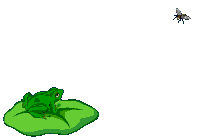 The dusky gopher frog returns to the Fifth Circuit; the Supreme Court has reversed a decision about judicial review of the Fish & Wildlife Service’s treatment of the endangered frog’s habitat, reached after a close denial of en banc review. In the meantime, the Fifth Circuit’s makeup has materially changed in ways that likely predispose the full court toward a different view of the underlying administrative-law issues.
The dusky gopher frog returns to the Fifth Circuit; the Supreme Court has reversed a decision about judicial review of the Fish & Wildlife Service’s treatment of the endangered frog’s habitat, reached after a close denial of en banc review. In the meantime, the Fifth Circuit’s makeup has materially changed in ways that likely predispose the full court toward a different view of the underlying administrative-law issues.
2018 has offered several close votes about en banc review, often showing the importance of the new Trump appointees to the overall makup of the Fifth Circuit. The Court recently voted to rehear en banc the case of Collins v. Mnuchin, an important administrative law dispute about the structure and authority of the Federal Housing Finance Agency (a regulator for Fannie Mae and Freddie Mac created by Congress after the 2008 financial crisis). The difficult issues produced three opinions by the panel members. The Court’s order requested supplemental briefing about, inter alia, the appropriate remedy if the Court concluded that the agency had a structural problem. The argument will be in January 2019 and should bring more insight about the direction of the modern Fifth Circuit. 
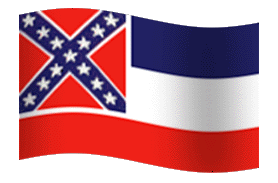 Despite the Trump Administration’s blazingly-hot pace for Fifth Circuit appointments, with five successful nominations before the midterm elections, the process of replacing Judge Jolly of Mississippi has lagged and the Court continues to have that one vacancy. Philip Thompson’s outstanding blog about Mississippi litigation recently had a detailed analysis of the political situation surrounding this vacancy.
Despite the Trump Administration’s blazingly-hot pace for Fifth Circuit appointments, with five successful nominations before the midterm elections, the process of replacing Judge Jolly of Mississippi has lagged and the Court continues to have that one vacancy. Philip Thompson’s outstanding blog about Mississippi litigation recently had a detailed analysis of the political situation surrounding this vacancy.
 If you are a lawyer in the Dallas area, you should read today’s post on 600Commerce, about the new Democratic majority and Democratic Chief Justice on the Dallas Court of Appeals.
If you are a lawyer in the Dallas area, you should read today’s post on 600Commerce, about the new Democratic majority and Democratic Chief Justice on the Dallas Court of Appeals.
 A Fifth Circuit panel struck down a Louisiana criminal statute about “threats” in Seals v. McBee, which led to an 8-8 vote and denial of en banc review. The full breakdown appears in the chart to the right; again, the new appointments by President Trump brought a case to the cusp of en banc review that likely would not have gotten so far before. No. 17-30667 (Oct. 31, 2018). A dissent from the denial of en banc review, joined by 4 of the 5 Trump appointees, would have dismissed the case on standing grounds. (The chart has been corrected from the original post, which misidentified Judge Dennis as a Republican appointee.)
A Fifth Circuit panel struck down a Louisiana criminal statute about “threats” in Seals v. McBee, which led to an 8-8 vote and denial of en banc review. The full breakdown appears in the chart to the right; again, the new appointments by President Trump brought a case to the cusp of en banc review that likely would not have gotten so far before. No. 17-30667 (Oct. 31, 2018). A dissent from the denial of en banc review, joined by 4 of the 5 Trump appointees, would have dismissed the case on standing grounds. (The chart has been corrected from the original post, which misidentified Judge Dennis as a Republican appointee.)
 The en banc case of Alvarez v. City of Brownsville involved a difficult question about municipal liability, under 42 U.S.C § 1983, for an alleged Brady violation arising during the plea bargaining process. The plaintiff had won a $2.3 million judgment after a jury trial. The majority opinion found inadequate evidence of deliberate indifference for § 1983 liability; as to the Brady issue, it held that “case law from the Supreme Court, this circuit, and other circuits does
The en banc case of Alvarez v. City of Brownsville involved a difficult question about municipal liability, under 42 U.S.C § 1983, for an alleged Brady violation arising during the plea bargaining process. The plaintiff had won a $2.3 million judgment after a jury trial. The majority opinion found inadequate evidence of deliberate indifference for § 1983 liability; as to the Brady issue, it held that “case law from the Supreme Court, this circuit, and other circuits does  not affirmatively establish that a constitutional violation occurs when Brady material is not shared during the plea bargaining process.” From there, the sixteen judges that comprised this en banc panel authored six other opinions; this chart summarizes the authors and the joinders. No. 16-40772 (Sept. 18, 2018). It is unclear how that breakdown may carry over to commercial cases, but the opinions are revealing insights into a number of judges’ attitudes about structural and constitutional issues.
not affirmatively establish that a constitutional violation occurs when Brady material is not shared during the plea bargaining process.” From there, the sixteen judges that comprised this en banc panel authored six other opinions; this chart summarizes the authors and the joinders. No. 16-40772 (Sept. 18, 2018). It is unclear how that breakdown may carry over to commercial cases, but the opinions are revealing insights into a number of judges’ attitudes about structural and constitutional issues.
 At the intersection of civil and criminal law, United States v. Gas Pipe reminds of the reach of the federal civil forfeiture: “Although ‘merely pooling tainted and untainted funds in an account does not, without more, render that account subject to forfeiture,’ untainted funds are forfeitable if a defendant commingled them with tainted funds ‘to disguise the nature and source of his scheme.’ Here, the Government alleged in its verified complaint that the defendant Claimants commingled tainted and untainted funds in the UBS accounts to conceal or disguise the tainted funds. Some commingled funds allegedly also secured a loan that financed the alleged spice scheme and which was repaid with criminal proceeds.” No. 17-10626 (Aug. 16, 2018) (citations omitted).
At the intersection of civil and criminal law, United States v. Gas Pipe reminds of the reach of the federal civil forfeiture: “Although ‘merely pooling tainted and untainted funds in an account does not, without more, render that account subject to forfeiture,’ untainted funds are forfeitable if a defendant commingled them with tainted funds ‘to disguise the nature and source of his scheme.’ Here, the Government alleged in its verified complaint that the defendant Claimants commingled tainted and untainted funds in the UBS accounts to conceal or disguise the tainted funds. Some commingled funds allegedly also secured a loan that financed the alleged spice scheme and which was repaid with criminal proceeds.” No. 17-10626 (Aug. 16, 2018) (citations omitted).
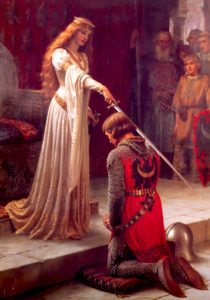 The issue in Kirchner v. Deutsche Bank was whether a spouse’s signature on a deed of trust – but not the loan instrument – satisfied the Texas Constitution’s requirements about home equity loans. The Fifth Circuit found the issue was squarely addressed by a prior unpublished opinion, which it called “persuasive,” and affirmed – this time, in a published opinion. The broader principle is that unpublished opinions can work their way into published “status” when the issues they address are recurring ones. No. 17-50736 (July 11, 2018).
The issue in Kirchner v. Deutsche Bank was whether a spouse’s signature on a deed of trust – but not the loan instrument – satisfied the Texas Constitution’s requirements about home equity loans. The Fifth Circuit found the issue was squarely addressed by a prior unpublished opinion, which it called “persuasive,” and affirmed – this time, in a published opinion. The broader principle is that unpublished opinions can work their way into published “status” when the issues they address are recurring ones. No. 17-50736 (July 11, 2018).
 Rehearing motions led to a revised panel opinion and an en banc vote in Mance v. Sessions, a Constitutional challenge to restrictions on handgun sales by an authorized federally-licensed firearm dealer, to a purchaser who lives in a different state from the dealer. The revised opinion affirming the restrictions stood, with the Court voting 9-7 against rehearing en banc. Two of the three dissents from the vote were written by recent nominees of President Trump, with all of his nominees joining the vote in favor of review. Notably, this vote reflects two vacancies at the time it was conducted (one of which has since been filled with the confirmation of Judge Oldham, and other to be filled when a nomination is made to replace Judge Jolly of Mississippi). Assuming the two nominees would join the other new judges in their view of this case, their addition would be outcome-determinative as to its en banc review.
Rehearing motions led to a revised panel opinion and an en banc vote in Mance v. Sessions, a Constitutional challenge to restrictions on handgun sales by an authorized federally-licensed firearm dealer, to a purchaser who lives in a different state from the dealer. The revised opinion affirming the restrictions stood, with the Court voting 9-7 against rehearing en banc. Two of the three dissents from the vote were written by recent nominees of President Trump, with all of his nominees joining the vote in favor of review. Notably, this vote reflects two vacancies at the time it was conducted (one of which has since been filled with the confirmation of Judge Oldham, and other to be filled when a nomination is made to replace Judge Jolly of Mississippi). Assuming the two nominees would join the other new judges in their view of this case, their addition would be outcome-determinative as to its en banc review.
 The Senate has now confirmed Andrew Oldham of Texas as the newest judge on the Fifth Circuit. Congratulations and every best wish to Judge Oldham.
The Senate has now confirmed Andrew Oldham of Texas as the newest judge on the Fifth Circuit. Congratulations and every best wish to Judge Oldham.
 Congratulations and every best wish to new Fifth Circuit judge Kurt Engelhardt of New Orleans, formerly the Chief Judge of the Eastern District of Louisiana, who was confirmed yesterday by the Senate. Fifteen of the Court’s seventeen positions for full-time judges are now filled, with the nomination of Texas’s Andrew Oldham pending, and the seat formerly held by Judge Jolly still vacant.
Congratulations and every best wish to new Fifth Circuit judge Kurt Engelhardt of New Orleans, formerly the Chief Judge of the Eastern District of Louisiana, who was confirmed yesterday by the Senate. Fifteen of the Court’s seventeen positions for full-time judges are now filled, with the nomination of Texas’s Andrew Oldham pending, and the seat formerly held by Judge Jolly still vacant.
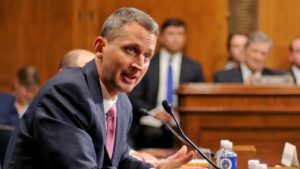 The Senate has confirmed Louisiana’s Kyle Duncan to a New Orleans-based seat on the Fifth Circuit, bringing the Court one step closer to a long-awaited full roster of active-duty judges. Every best wish to Judge Duncan.
The Senate has confirmed Louisiana’s Kyle Duncan to a New Orleans-based seat on the Fifth Circuit, bringing the Court one step closer to a long-awaited full roster of active-duty judges. Every best wish to Judge Duncan.

